Physical Education and Sports in Singapore Schools (Part II): Developing National Sports Talents
Librarian Wee Tong Bao traces the journeys that schools embarked upon to reestablish inter-school sporting events after World War II, and comments on the initial forays into the international sporting arena.
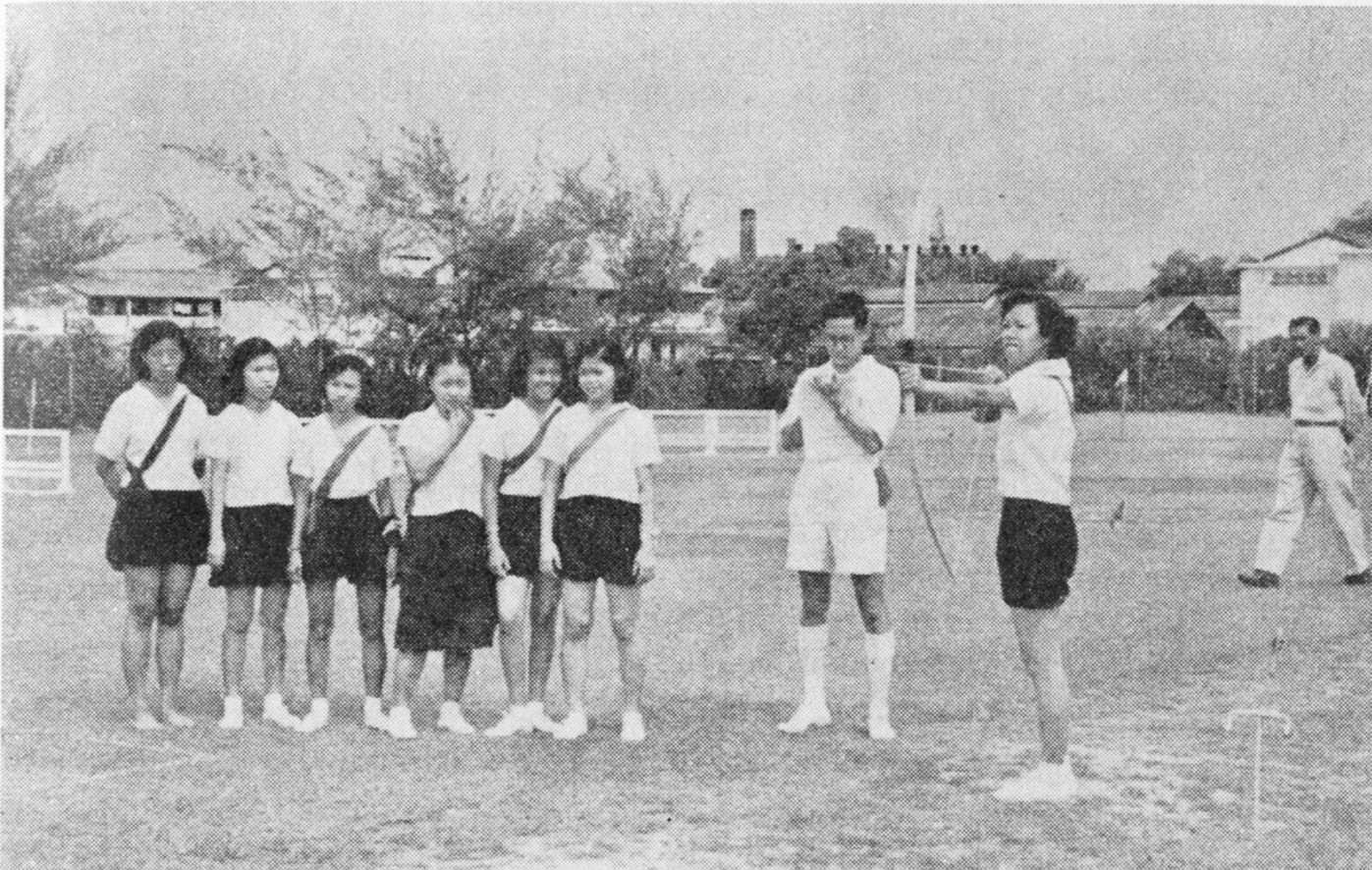
Recovery and Revival
The reestablishment of schools and the education system after World War II was a slow process that gradually gained momentum over time. Similarly, sporting activities in schools also took time to recover. The first part of this article, published in the July 2010 issue, discussed the creation of a national physical education curriculum. This essay will trace the journeys that schools embarked upon to reestablish inter-school sporting events, as well as comment on the initial forays into the international sporting arena.
By 1947, athletic sports started again in schools – “[s]ixteen English schools held School Sports and more than 2,000 pupils from English, Malay and Chinese schools took part in various inter-school competitions” (AR, 1947, p. 62). By 1950, the number of schools holding sports meets increased to 43 (AR, 1950, p. 86), involving all Government and aided schools (37) (ibid., p. 89). From 1953, other inter-school competitions were added to the schools sports calendars. There were the inter-school Chinese swimming championships and inter-school football, swimming, athletics and netball competitions for the junior schools (AR, 1953, p. 51). By 1957, the Malay Schools Sports Council also organised the first annual inter-school netball for Malay schools. Around that period, the Singapore Combined Schools Sports Council (primary and secondary) also organised inter-district competitions, providing students with another arena to compete in besides the inter-school sport meets.
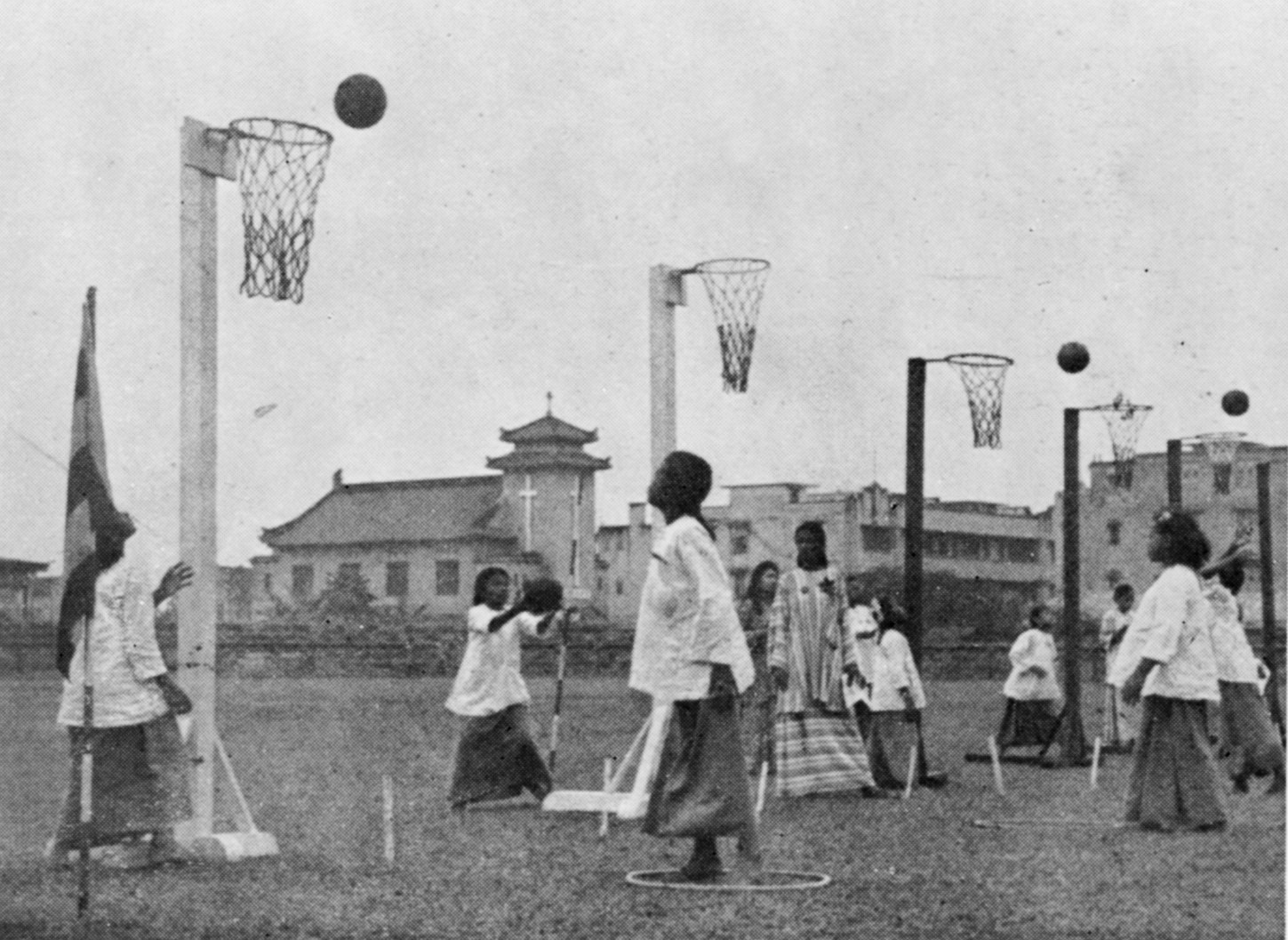
The participation of students in events organised outside Singapore was part of the recovery and revival of sports in schools. After excelling at the school level, students went on to compete in national and regional arenas. In 1950, two girls from Chinese schools represented Singapore at the Malayan Amateur Athletic Championships (AR, 1950, p. 89). Another student from a girls’ school was the Singapore Women’s Badminton Champion for 1950 (ibid., p. 89). Such participation was repeated the following year, and more achievements in other areas were added. The Education Department proudly noted that “a schoolboy swimmer holds four Colony swimming records”. At the 1951 Malayan Athletic Championships in Kuala Lumpur, senior pupils from Singapore schools won five events and created three Malayan records (AR, 1951, p. 89). The best athletes from Singapore Chinese schools also competed against their Malayan counterparts in the Malayan Chinese Athletic Championship Meeting.
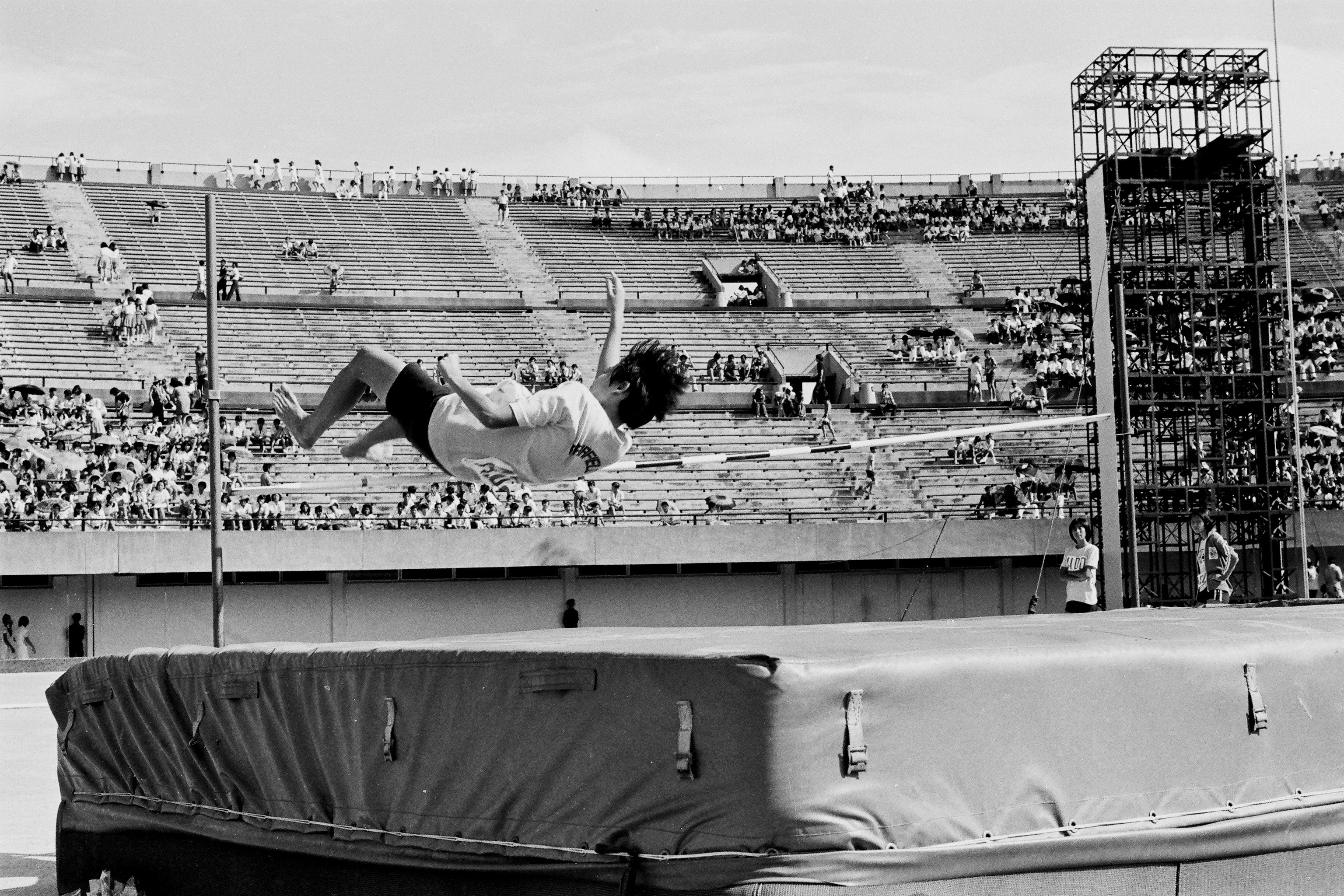
Outstanding students went on to pit their skills against the best on the international stage. In 1953, the Colony boxing team that competed in Western Australia included ten boxers from Singapore schools (SSAR, 1953, p. 51). Singapore secondary school students also made their presence felt during the Asian Games held in Djakarta (present-day Jakarta) in August 1962 (the Asian Games was inaugurated in 1949). And at the 6th South East Asian And Peninsular Games (SEAP) in 1965, 18 out of 24 of Singapore’s gold medals were won by swimmers – one of whom was 11-year-old Patricia Chan – dubbed “Singapore’s Princesses of the Pool” (AR, 1965, p. 10; Straits Times, 17 Dec 1965, p. 24). At the international level, the Singapore contingent for the 1952 Olympic Games in Helsinki included three students from Singapore schools – a swimmer, a weightlifter and a female athlete (AR, 1952, p. 54).1 During the 1964 Tokyo Olympics, another six students represented Singapore.
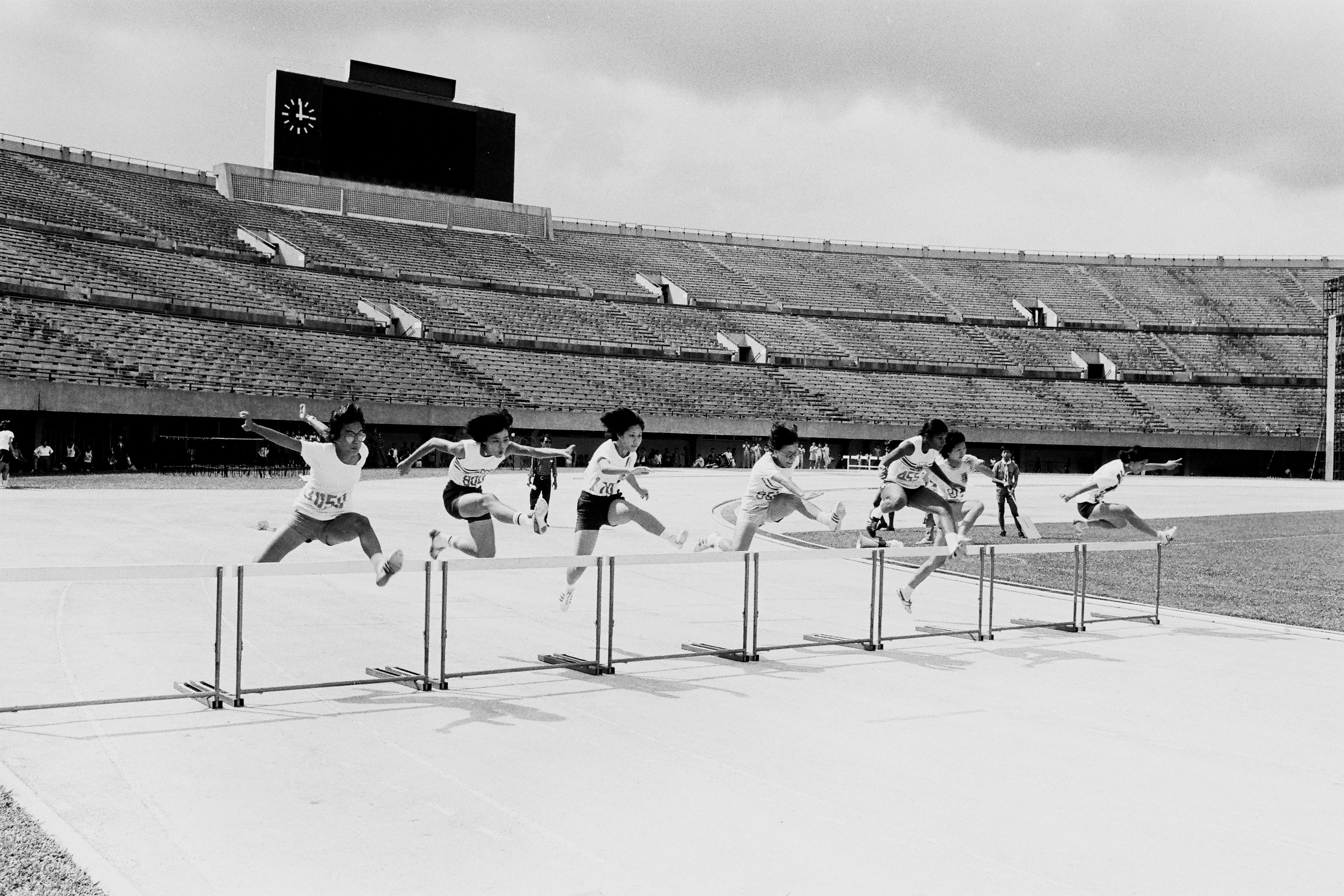
Raising the Standards of Physical Education
The attainment of self-rule and independence also meant that a national curriculum for physical education that supported nation-building was to become the central agenda. Just as technical education was promoted in schools to support the national industrialisation initiative, a structured physical education syllabus was conceived for the purpose of developing a robust nation.
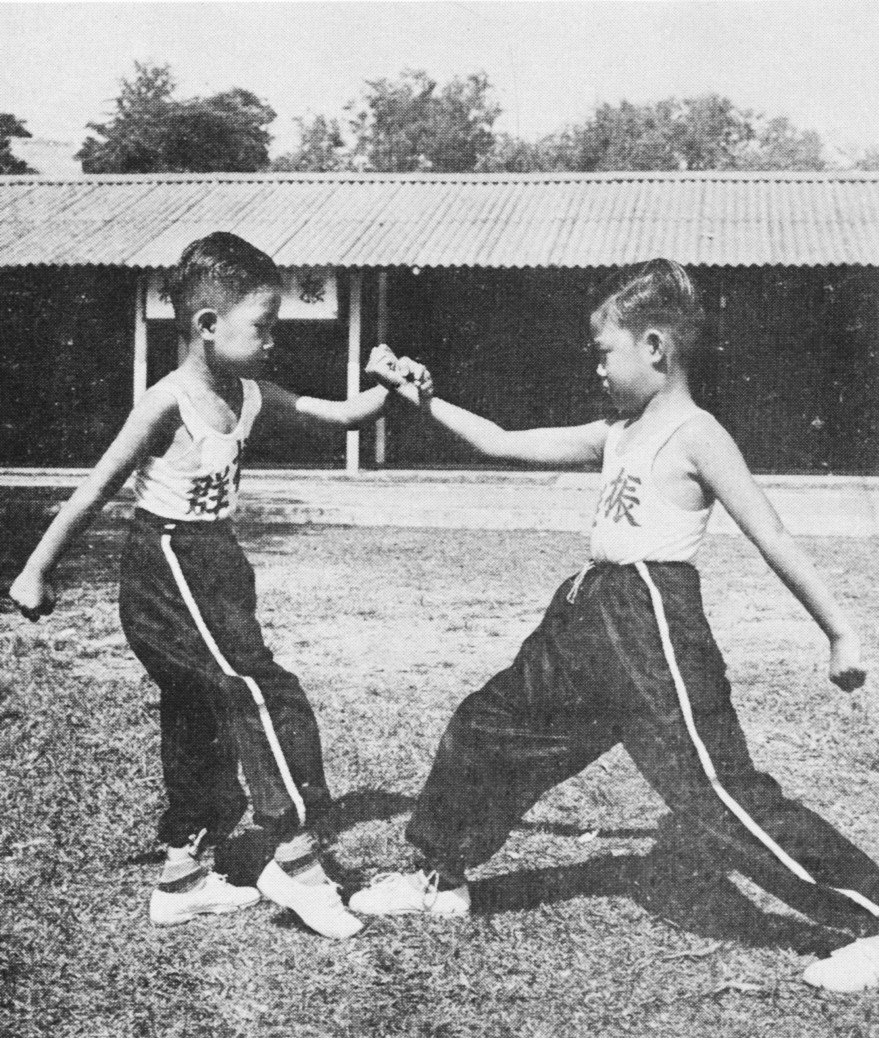
Examples of the national physical education syllabus that are available at the Lee Kong Chian Reference Library collection include Free Hand Exercise for Primary Schools (1961) and Syllabus for Physical Education in Secondary Schools (1961). In the latter publication, the introduction states “this is a syllabus of Physical Education common for Malay, Chinese, English and Tamil Secondary Schools in Singapore”. Such standardisation could also be observed in the Syllabus & Guidelines for Physical Education Primary 1 and 2 (1971), Syllabus & Guidelines for Physical Education Primary 3 and 4 (1971).
Training sessions and seminars were conducted to assist the teachers in keeping up with the latest syllabus. As two distinct language systems still existed in Singapore at the time, the Ministry of Education organised a “Chinese Schools Women Teachers Physical Education Training Class” in 1962 with the objective of standardising teaching in all primary schools. The first class saw a total of 500 teachers from 180 Chinese-medium schools participating (Singapore Women Physical Education Teachers Society, 1983, p. 29). At the suggestion of then Minister for Education Ong Pang Boon to allow female teachers from non-Chinese-medium schools to benefit from such training as well, the organisation changed its name to the “Singapore Women Physical Education Teachers Society” in 1968.

To enable physical education specialists and administrators to share notes and learn from each other, the Singapore Sports Council (later also partnering with the Singapore Physical Education Association) organised annual seminars from 1974 onwards (SPEA News, May 1994, p. 2). For the subsequent seminars, specific themes were set to give focus and enhance learning. For example – 1976: Towards More Meaningful Physical Education; 1977: National Fitness Through Physical Education and Sports; 1978: Innovations in Physical Education; 1979: Physical Fitness Testing in ASEAN Schools; 1980: Trends in Coaching.
This series of seminars led to the genesis of the Singapore Physical Education Association. After the first seminar, many participants suggested forming an association to “encourage and campaign for higher standards of… physical education” among other objectives (SPEA, May 1994, p. 2). A pro-tem committee was formed and the inaugural meeting of the association took place on 19 July 1975 (SPEA News, May 1994, p. 2). As part of the wider effort to promote sporting activities, it was no coincidence that the Ministry of Education started the National Fitness Award in the 1980s.
Organisation and Administration of Sports Agencies
The achievements in sports competitions and higher standards in physical education would not have been possible without the developments in the administrative structures. The English, Malay and Chinese Schools Sports Councils were already formed before World War II. On 20 May 1947, more than 50 representatives from various sporting associations in Singapore met to deliberate on the founding of a Singapore Olympic and Sports Council (SOSC) (Straits Times, 21 May 1947, p. 8). The Singapore Olympic and Sports Council was officially formed on 27 May 1947 (Straits Times, 27 May 1947, p. 12). This was Singapore’s first step towards participating in the Olympics.
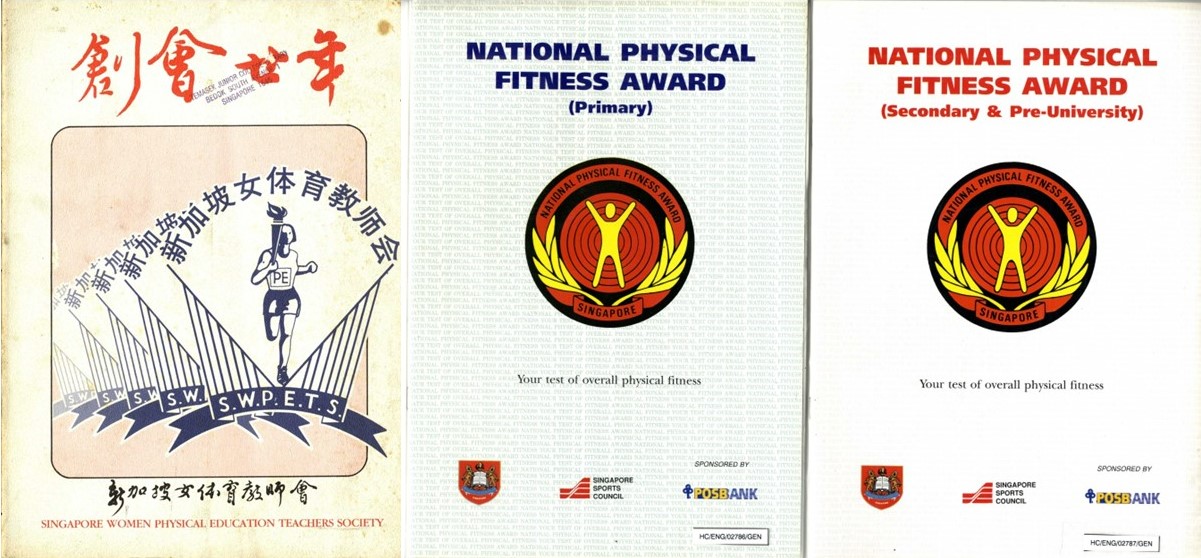
In 1957, the Indian Schools Sports Council was finally established (AR, 1955–57, p. 34). Immediately, the Council planned the first Inter-Indian Schools Football Competition and the first Inter-Indian Schools Athletics Meet in 1958 (AR, 1957, p. 34). In November 1959, when the Education Advisory Council was set up (AR, 1959, p. 2), one of the standing committees formed was the Committee on Physical Education. Another milestone that year was the founding of the Singapore Combined Schools Sports Council (SCSSC, Lembaga Sukan Sekolah-Sekolah Menengah Singapura) with Joseph David appointed as its first advisor (SSSC, Celebrating, p. 16).
The Singapore Combined Schools Sports Council and Singapore Primary Schools Sports Council (SPSSC) were formed in 1959 to replace all the sports councils, which had previously been organised along ethnic lines. With the combined Sports Councils, all primary schools were grouped into eight District Councils: Bukit Timah, City, Geylang, McNair, Newton, Radin Mas, Telok Kurau and Upper Serangoon (ibid.). As for the secondary schools, they were grouped into five districts: Bukit Timah, City, Katong, Pasir Panjang and Serangoon. The objective of grouping schools into districts was to allow coaches and athletes to share resources and knowledge. In 1979, the Zone Councils replaced the district system. Schools were grouped into four Zone Councils: North, South, East and West (ibid., p. 13, 22). In 1982, in addition to the four Zone Councils, age-group classification was introduced to ensure a level competing field for all athletes: A, B and C Division (ibid., p. 13). Students between 17 and 20 years of age as of 1 January of each calendar year should compete in A Division; while those between 14 and 17 years of age compete in the B Division and those under 14 years old compete in C Division (ibid., p. 23).
The Singapore Combined Schools Sports Council also crafted full sports programmes for schools and organised inter-school competitions (AR, 1963, p. 7). In 1968, the Singapore Combined Schools Sports Council organised as many as 15 inter-school meets for secondary schools while the Singapore Primary Schools Sports Council conducted 10 inter-school championships for the primary schools (SSSC, Celebrating, p. 16). In 1970, the Singapore Combined Schools Sports Council was renamed the Singapore Schools Sports Council (ibid., p. 17).
The administration of sports in schools received a boost in 1970, when Ong Pang Boon established the Extra-Curricular Activities Branch (SSSC, Celebrating, p. 17). In 1984, the College of Physical Education was set up to ensure that staff conducting Physical Education in schools continued to be professionally trained (ibid., p. 12). To give further emphasis to sports in schools, the Sports Excellence Assistance Programme for Schools (SEAPS) scheme was launched in 1992 and SSSC administered the scheme on behalf of the Singapore Sports Council (SSSC, Celebrating, p. 13 and p. 32). The Singapore Sports Council and the Ministry of Education continued to work together to improve the standard of physical education. In 2007, the two agencies collaborated on the “Sports Education Programme” (SEP) in schools (ibid., p. 42).
In the New Millenium
Previously, sports had been conducted as a subject or extracurricular activity outside the core syllabus in schools. This changed when a full-fledged sports school was set up. As early as 2000, a Committee on Sporting Singapore (CoSS) was formed to “review and make strategic recommendations” (Report of the Committee on Sporting Singapore, 2001, p. 10) on how to further develop sports in Singapore. One of their recommendations was to set up a Sports School “to allow… those who have the inclination for and ability in sports to pursue their athletic goals without sacrificing quality academic education” (Report of the Committee on Sporting Singapore, 2001, p. 10). In April 2000, the Ministry of Community Development and Sports appointed a Sports School Taskforce to explore the possibility of setting up such a School (Singapore Sports School, 2004, p. 18).
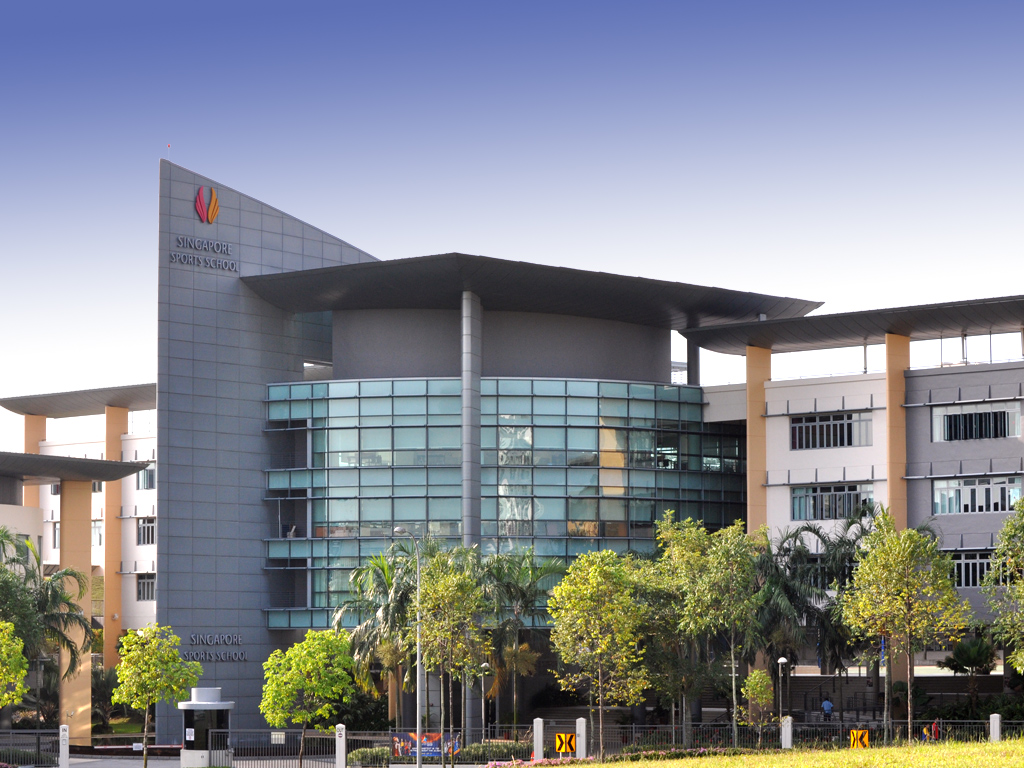
In November 2000, the Taskforce submitted a concept paper, which recommended proceeding with the setting up of a sports school. A seven-hectare site in Woodlands was picked for the school. The groundbreaking ceremony took place on 11 November 2002. Moo Soon Chong was named the head of the Sports School in July 2002 (Straits Times, 2 July 2001, p. 1). He had been the principal of Anglican High before he headed the Singapore Sports School and a firm believer that “academic and sports excellence can – and indeed, should mix” (Straits Times, 2 July 2001, p. 2). He retired in January 2008 (Straits Times, 22 February 2008, p. 1).2 The creation of the Singapore Sports School was fully supported by the Ministry of Education, which was prepared to fund the school, as it would have any other secondary school. Further collaboration between the two ministries led to the co-organisation of the first Youth Olympic Games (YOG), held in Singapore from 14 to 26 August 2010.
As far back as mid-2007, the Ministry of Community Development, Youth and Sports led the bid to host the first YOG. As the first Olympic games for youth athletics, it was pitched as a game “for young people, by young people” (Singapore 2010, vol. 1, p. 6). The concept that guided the design and implementation of the Games was to “stage a youth-focused Games that has Olympism at its heart, with integrated sport, educational and cultural programmes” (Singapore 2010, vol. 1, p. 3). The Games was not just for the participating youth athletes but youth in Singapore and other parts of the world (Singapore 2010, vol. 1, p. 4).
After it was announced on 21 February 2008 that Singapore had won the bid to host the first YOG, the Ministry of Education came up with Resource Packs for primary schools, secondary schools and junior colleges. Titled Living Olympism, these were to “connect students to the Olympic movement”. (Living Olympism, p. 1; Straits Times, 30 December 2008, p. B10).
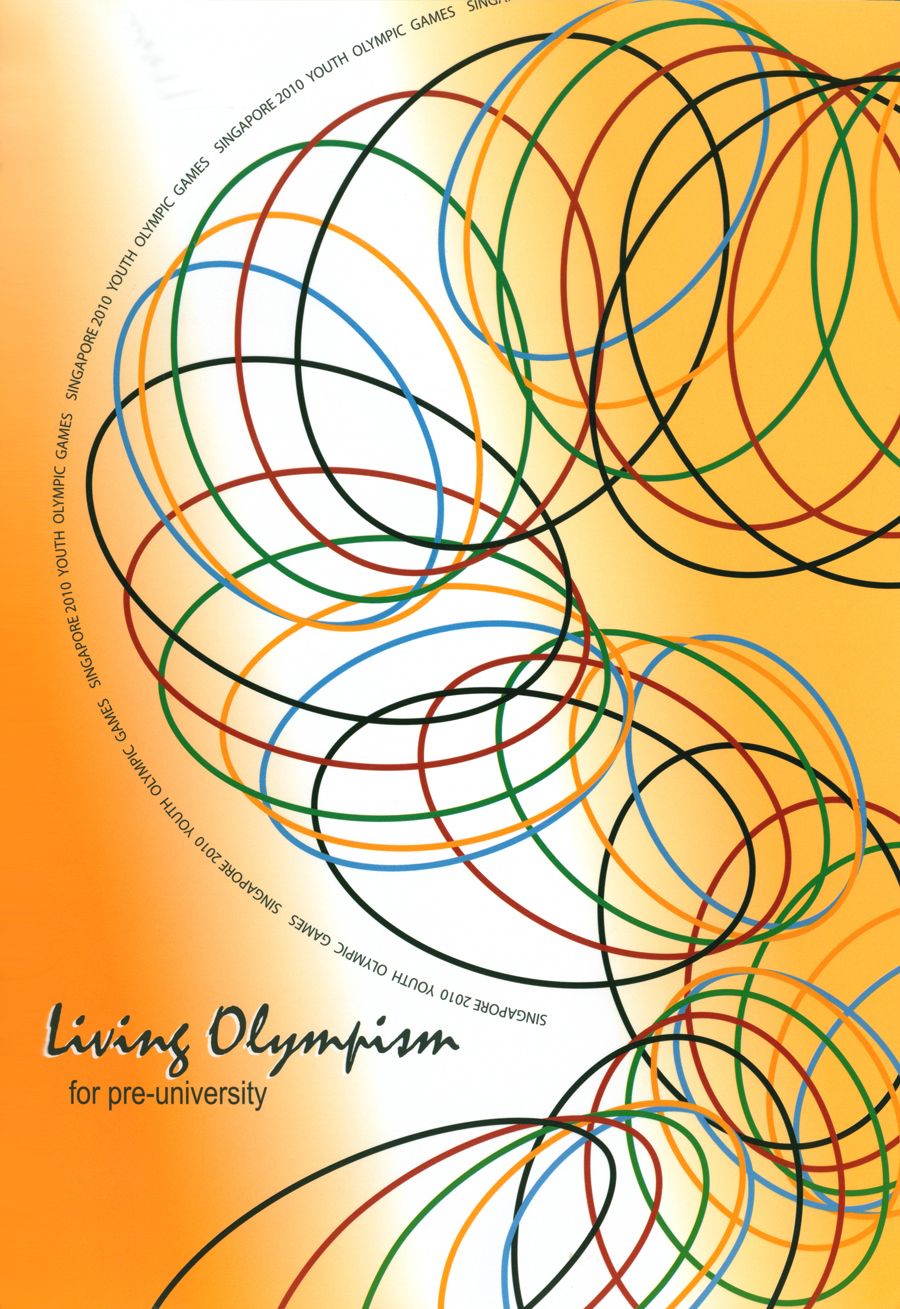
The objective of these resource packs was to help staff and students “in the study of the history, values and traditions related to the Olympic Games”. Each of these packs covered six areas: History of the Olympic Movement; Olympism & Olympic Values; Well-being & Healthy Lifestyle; Social Responsibility, Involving Youth (Careers Related to Sports); Sports Context (Career Management); and Risks in Sports. Some schools had in fact implemented their own Olympic education programmes even before the YOG bid was announced in July 2007 (Straits Times, 24 Feb 2008, p. 38). This purpose of these educational programmes was to encourage fair play, integrity and team spirit.
As part of the preparation for the YOG, the MOE put in place initiatives for schools and students to get more involved with the event. Students were roped in as volunteers and buddies to the young athletes from the other countries. In addition, a “twinning programme”, where schools were paired up with all the 205 National Olympic Committees present was initiated (Straits Times, 1 Feb 2010, p. B6).
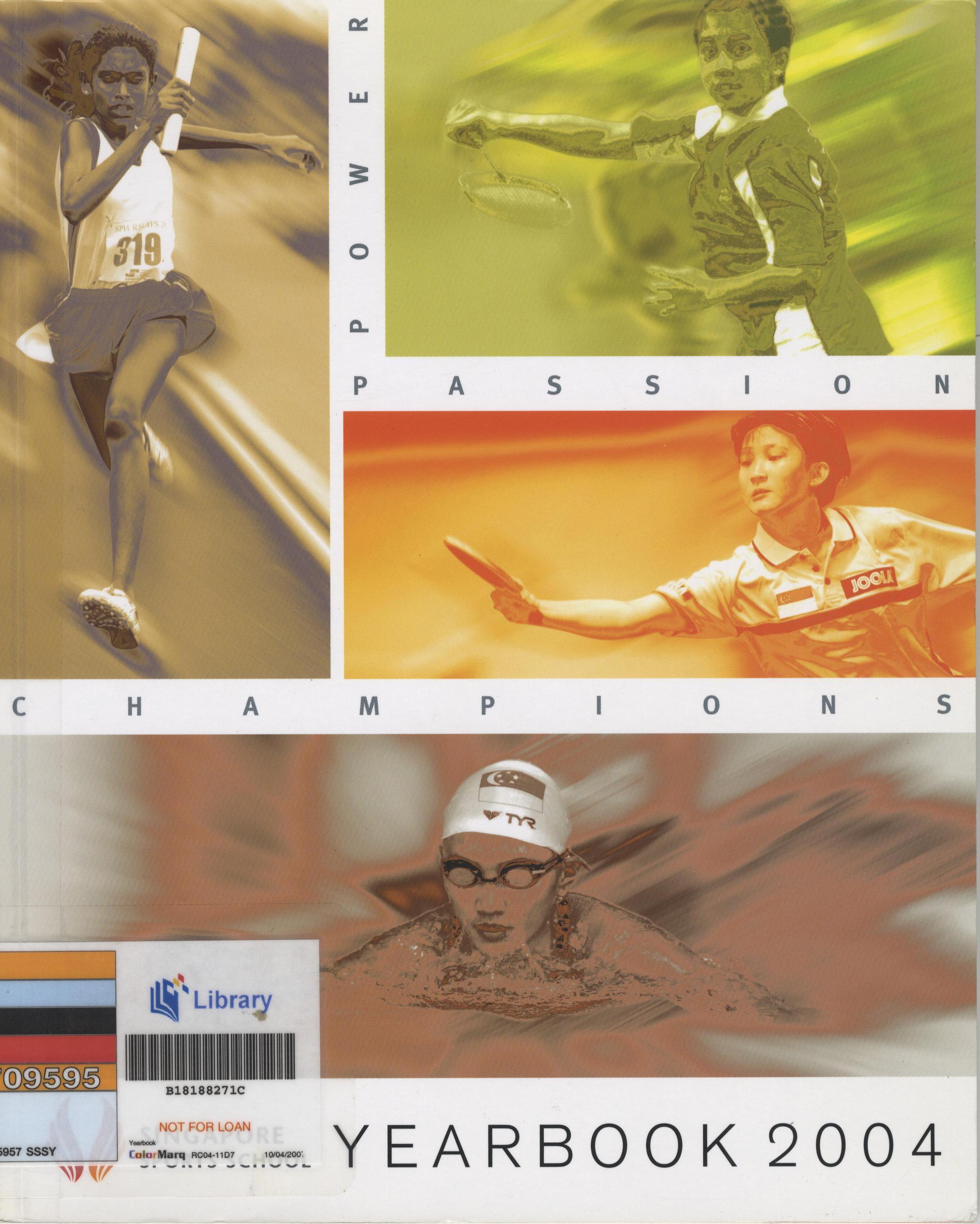
The MOE’s efforts in encouraging sports and improving the standard of physical education does not stop at winning the bid to host the Games. In May this year, the ministry inaugurated a Youth Sports Conference and announced a new physical education and sports development framework that covers mass participation programmes, specialised sports programmes and talent development programmes for its students. Its mass participation programmes aim to instil knowledge and the right attitudes in students towards sports so that they will continue to lead healthy lifestyles even after they graduate. The specialised sports programmes are intended to develop students’ interests in either coaching, sports science or sports administration, to which they can contribute in future. The last initiative in this framework is to groom potential sportspersons who can represent Singapore internationally (Straits Times, 26 May 2010, p. B10).
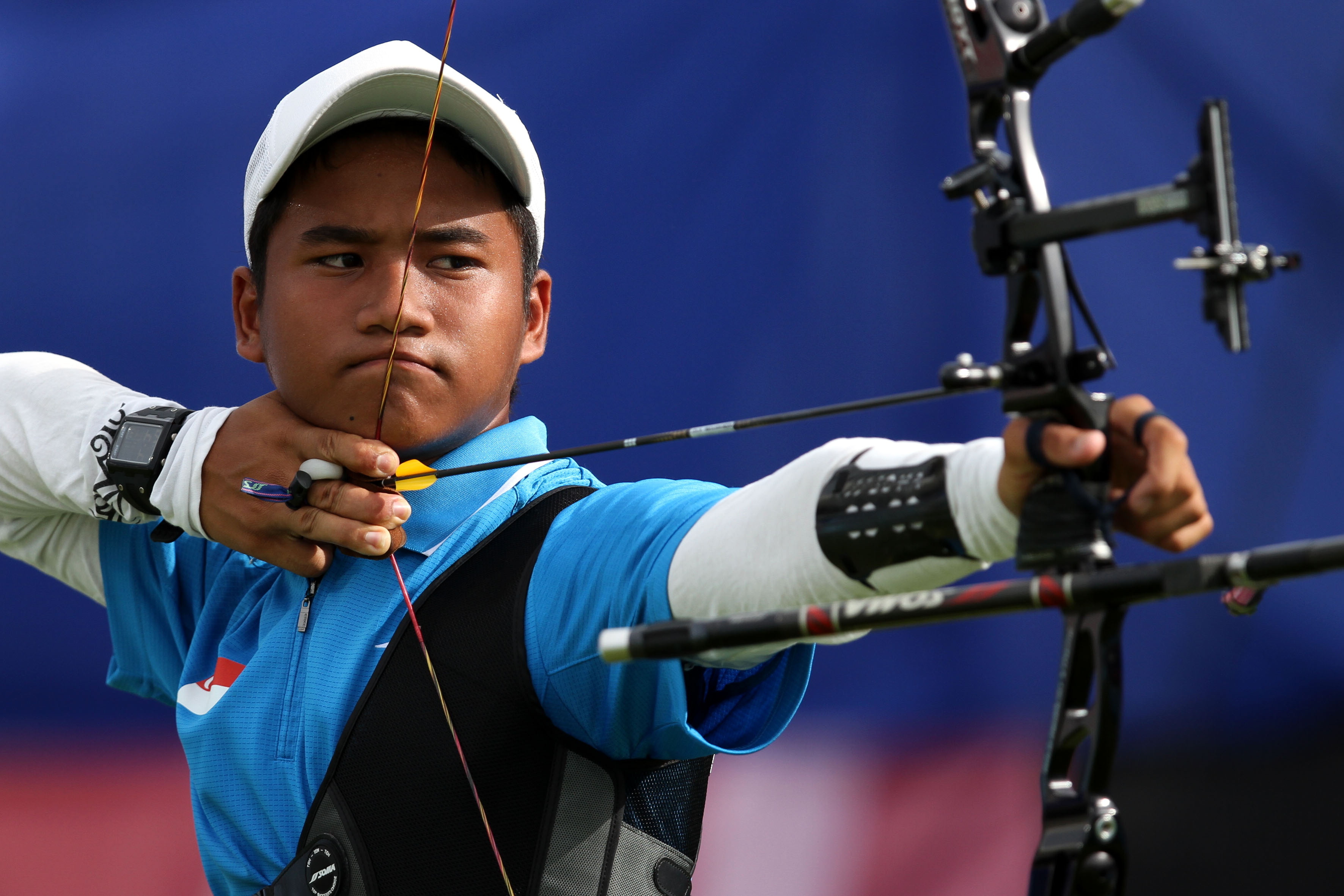
Conclusion
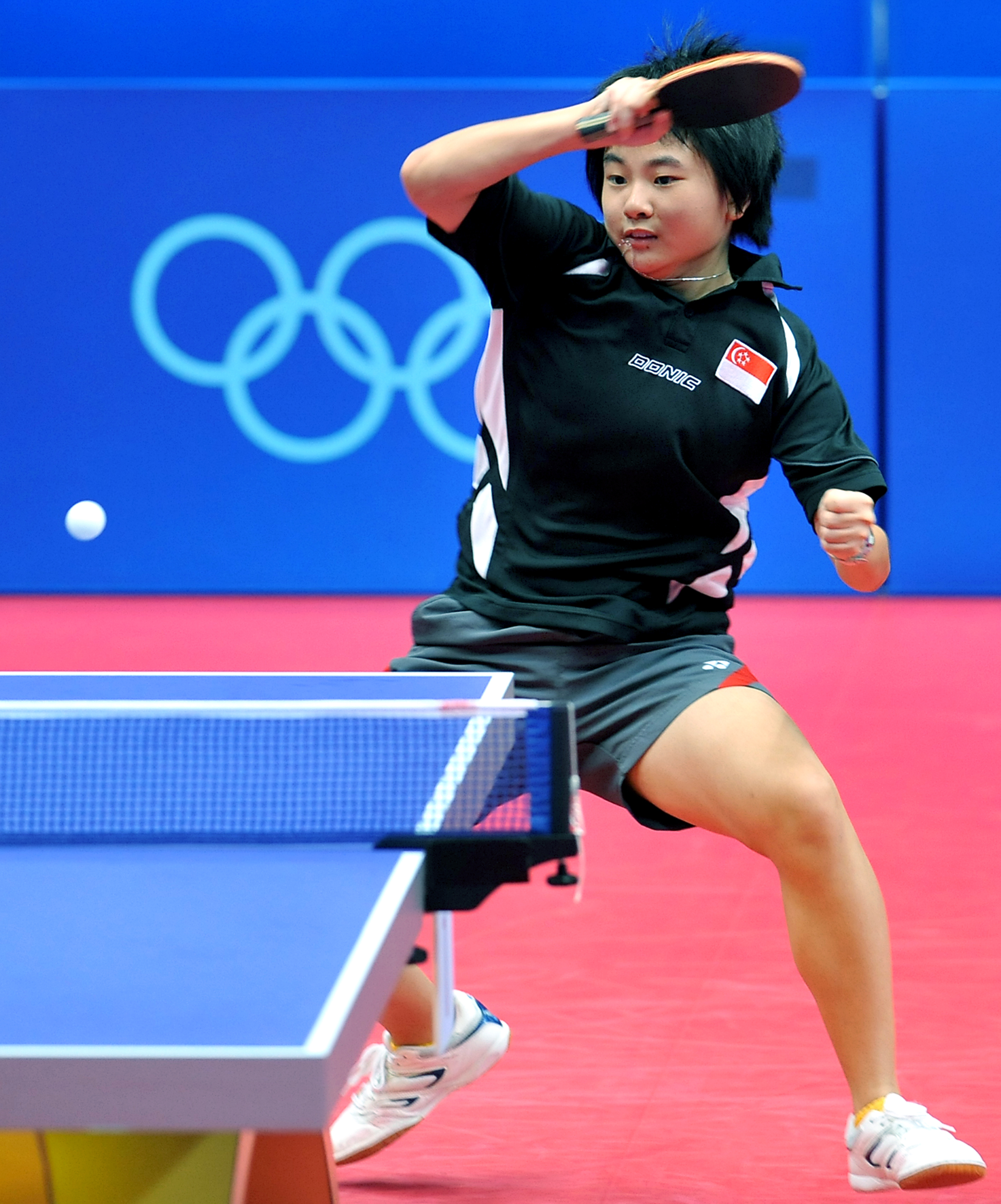
Since the first physical education lessons were conducted in our schools, the seeds of sportsmanship and the goal of Citius, Altius, Fortius (Olympic motto in Latin; “Faster, Higher, Stronger”) has been planted. The success of the bid to host the Youth Olympic Games is not solely owed to the bidding committee’s efforts, nor is it merely due to Singapore’s present economic political stability. The long road that Singapore has journeyed to prepare its people to earn the privilege to host the Games can be traced to the inception of sports and games in schools, and to Singaporean’s determination to excel.
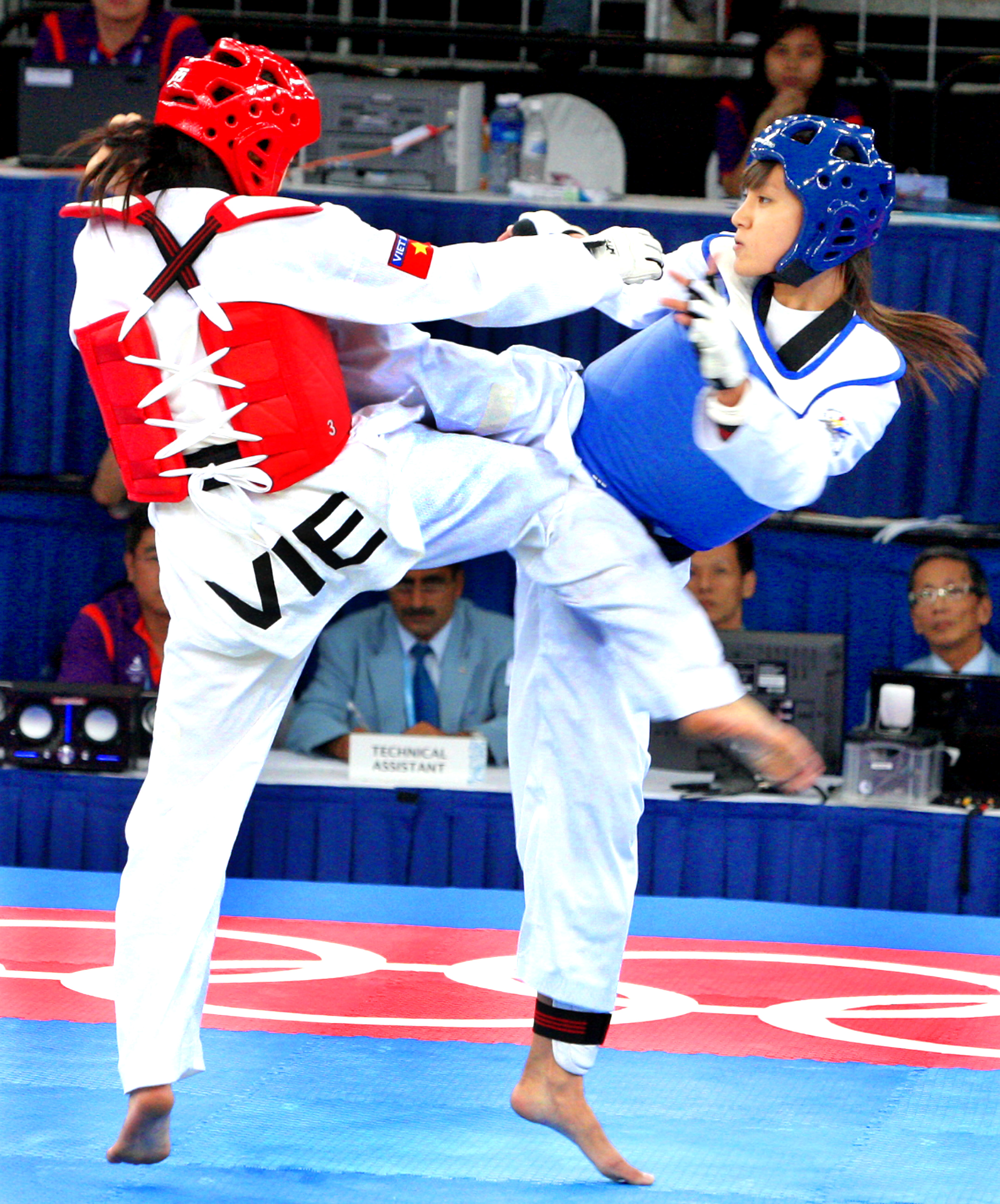
In the years preceding Singapore’s independence, the progress of physical education and sports training in schools had been slow. It was only after independence that a national agenda made it mandatory for all schools to follow a formal Physical Education curriculum. As a result, schools became centres of sports and games development. In some instances, school teams and sportspersons also represented the country on its national team. This historical symbiotic relationship between physical education and sports training in schools, and the national sporting scene has been underscored by the Ministry of Education’s involvement in the Youth Olympic Games. In this context, the National Library is privileged to have in its collection many of the curricula text and teachers’ guides on physical education and programmes for sporting meets. Collectively, they form a documented memory of Singapore’s sporting and education history.
The author wishes to acknowledge the contributions of Tim Yap Fuan, Principal Librarian, Central Library, National University of Singapore, in reviewing this article.
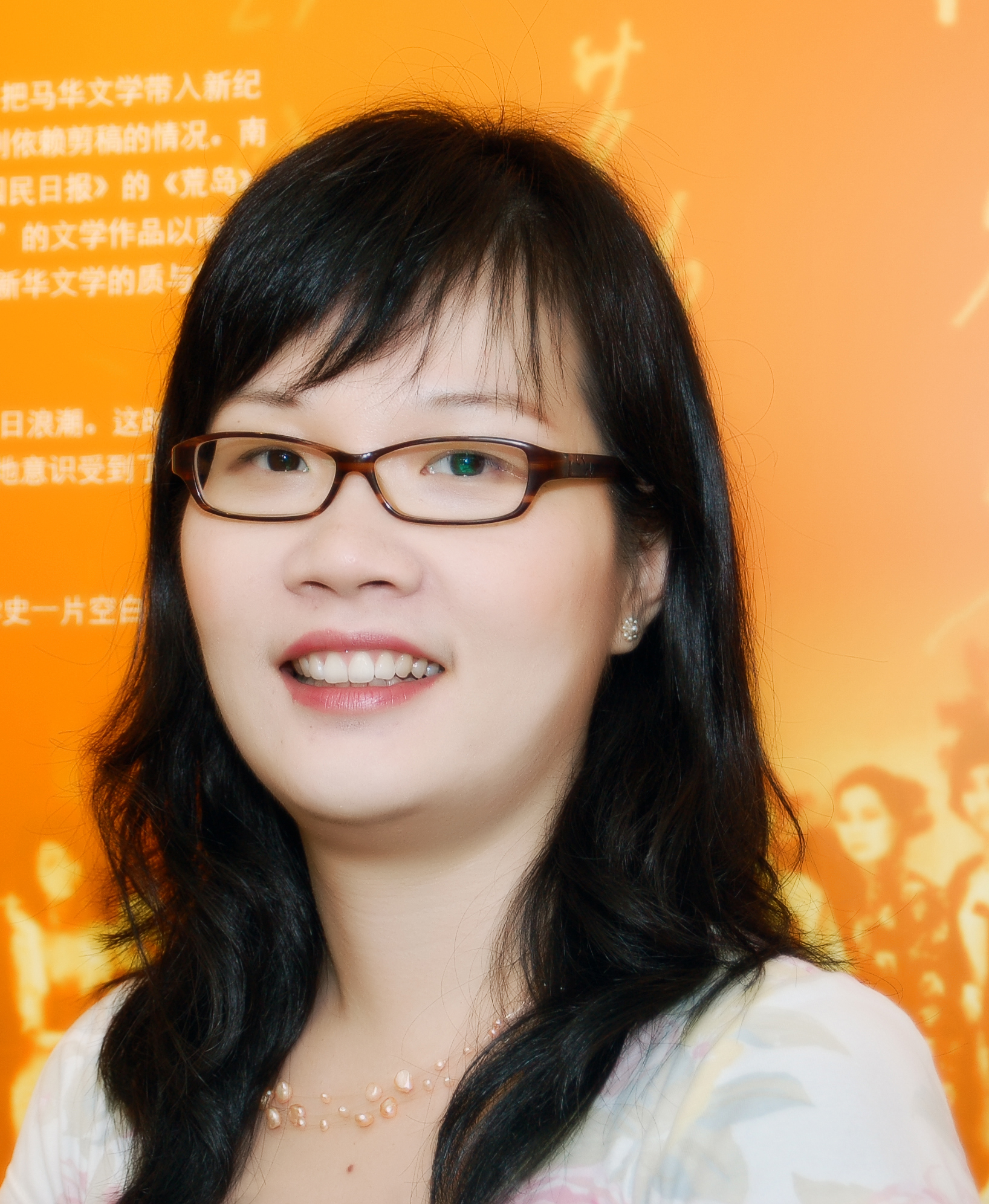
Librarian
Lee Kong Chian Reference Library
National Library
REFERENCES
Bukit Timah District Primary Schools Sports Council 15th Annual Inter-District Athletic Championship Meet. (1974)
Curriculum Planning & Development Division, Ministry of Education & Singapore Olympic Academy, Living Olympism for Primary Schools (Singapore: Curriculum Planning & Development Division, Ministry of Education, 2008). (Call no. RSING 613.707105957 LIV)
Curriculum Planning & Development Division, Ministry of Education & Singapore Olympic Academy, Living Olympism for Secondary Schools (Singapore: Curriculum Planning & Development Division, Ministry of Education, 2008). (Call no. RSING 613.707105957 LIV)
Curriculum Planning & Development Division, Ministry of Education & Singapore Olympic Academy, Living Olympism for Pre-University (Singapore: Curriculum Planning & Development Division, Ministry of Education, 2008). (Call no. RSING 613.707105957 LIV)
Ministry of Education, Singapore, Annual Report (Singapore: Ministry of Education, 19–) (*1954–56 reports published by Singapore. Department of Education. Reports also known by other titles) (Call no. RCLOS 370.95951 SIN; available on microfilms)
Ministry of Education, Singapore, Free Hand Exercise for Primary Schools (Singapore: Ministry of Education, 1961)
Ministry of Education, Singapore, Physical Education: Syllabus. Primary 1–2 (Singapore: Ministry of Education, 1971). (Call no. RSING 372.86 SMEPE)
Ministry of Education, Singapore, Physical Education: Syllabus. Primary 3–4 (Singapore: Ministry of Education, 1971). (Call no. RSING 372.86 SMEPE)
Ministry of Education, Singapore, Physical Education: Syllabus. Primary 1–2 (Singapore: Ministry of Education, 1971). (Call no. RSING 372.86 SMEPE)
Ministry of Education, Singapore, Physical Education: Syllabus. Primary 3–4 (Singapore: Ministry of Education, 1971). (Call no. RSING 372.86 SMEPE)
Ministry of Education, Singapore, Syllabus for Physical Education in Secondary Schools (Singapore: G.P.O., 1961). (Call no. RCLOS 371.7323 SIN)
Singapore Catholic Secondary School 新加坡公教中学, Xinjiapo gongjiao zhongxue yijiuliusan niandu zhong xiaoxue lianhe yundonghui zhixu ce 新加坡公 教中学一九六三年度中小学联合运动会秩 序册 [Order Book of the 1963 Combined Primary and Secondary Sports Games of Singapore Catholic Secondary Schools] (Xinjiapo 新加坡: Gongjiao zhongxue 公教中学, 1963)
Singapore Chongfu Love School (Student) Friendship Association 新加坡崇福爱同校(学)友会 , (1959). Xinjiapo chong fu ai tong xiao (xue) you hui lianhe tiyu biaoyan dahui jinian tekan 新加坡崇福爱同校(学)友会联合体育表演大会纪念特刊 [Singapore Chongfu Ai School (Student) Friendship Association Joint Sports Performance Conference Commemorative Special Issue] (Xinjiapo 新加坡: Xinjiapo Chong fu Ai tong xiao (xue) you hui 新加坡崇福爱同校(学)友会, 1959). (Call no. Chinese RCLOS 796.095957 XJP)
Singapore Combined Secondary Schools’ Sports Council 6th Annual Inter-District Athletic Championship Meet. (1965)
Singapore Female Physical Education Teachers Association 新加坡女体育教师会, Xinjiapo nu tiyu jiaoshi hui chuang hui nian nian 新加 坡女体育教师会创会廿年 [The 20th anniversary of the founding of the Singapore Female Physical Education Teachers Association] (Xinjiapo 新加坡: Nu ti yu jiaoshi hui女体育教师会, 1983)
Singapore MCA Games 新加坡马华运动大会, Di liu jie mahua yundong dahui 第六届 马华运动大会 [The Sixth Malayan Chinese Athletic Championship Meeting, 1965). (Xinjiapo 新加坡: Mahua yundong dahui, 1965)
Singapore Physical Education Association, SPEA news: A Publication of the Singapore Physical Association (Singapore: Singapore Physical Education Association, 1994–). (Call no. RSING 613.70705957 SPEAN)
Singapore Sports Council, National Physical Fitness Award (Primary): Your Test of Overall Physical Fitness (Singapore: Sports Council, 1981)
Singapore Sports Council, National Physical Fitness Award (Secondary & Pre-University): Your Test of Overall Physical Fitness. (Singapore: Sports Council, 1981)
South-East Asia Peninsula Games, Fifth South-East Asia Peninsula Games (SEAP Games): Official Report Rangoon 1969 ([Rangoon: s.n.], 1969). (Call no. RCLOS 796 SOU)
South East Asia Peninsula Games, 7th SEAP Games [Information on Events] (Singapore: South East Asia Peninsula Games, 1973). (Call no. RCLOS 796 SOU) (14 vols.)
South-East Asia Peninsula Games, Record of Results (Singapore: South-East Asia Peninsula Games, 1973). (Call no. RSING 796 SOU)
Victoria School Annual Athletic Sports. (1966).
立化, 华义政府华文中学联合运动会 华义政府华文中学联合运动会 (1975).《立化.华义政府华文中学联合运 动会—第三届(立化第十五届、华义第十 八届)》. 新加坡《立化.华义政府华文中 学》
NEWSPAPERS
Carl Skadian, “It’s Singapore 2010,” Straits Times, 24 February 2008, 1. (From NewspaperSG)
Chan Tse Chueen, “PM Spells Out 3 Sports Goals,” Straits Times, 2 July 2001, 1. (From NewspaperSG)
Chan Tse Chueen, Paper Chase: Flexibility Yes, Comprising Quality, No,” Straits Times, 2 July 2001, 2. (From NewspaperSG)
F. Emmanuel, “‘Golden Girl’ Patricia!” Straits Times, 17 December 1965, 24. (From NewspaperSG)
Joe Dorai and M. Rahman, “Swim ‘Golds’ for Tan and Pat,” Straits Times, 16 December 1965, 24. (From NewspaperSG)
Leow Si Wan and Amelia Tan, “Schools on Track To Ensure Student Support for YOG,” Straits Times, 1 February 2010, 6. (From NewspaperSG)
Leonard Lim, “Sports for Youth,” Straits Times, 26 May 2010, 10. (From NewspaperSG)
Liaw Wy-Cin, “School Sports Boost in New Scheme,” Straits Times, 27 January 2007, 60. (From NewspaperSG)
Lin Xinyi and Daniel Wong, “Olympic Education Programme Launched,” Straits Times, 30 December 2008, 30. (From NewspaperSG)
“Swimming Programme,” Straits Times, 15 December 1965, 23. (From NewspaperSG)
Teo Cheng Wee, “Getting Schools Involved,” Straits Times, 24 February 2008, 37. (From NewspaperSG)
Yeo Shang Long, “Sports School’s Founding Principal Dies of Cancer,” Straits Times, 17 March 2010, 6. (From NewspaperSG)
WEBSITE
Youth Olympic Games Bid Book – Singapore 2010 candidature file, Volume 1 & 2.
NOTES
-
Singapore’s first involvement in the Olympics was in 1948 when, Lloyd Valberg, a 25-year-old Eurasian represented Singapore in the long-jump event (S. E. Nelson, “Singapore’s Olympic Hope,” Straits Times, 31 January 1948, 11. (From NewspaperSG) ↩
-
Singapore’s sports administration scene lost this visionary leader in sports education on 16 March 2010. Yeo Shang Long, “Sports School’s Founding Principal Dies of Cancer,” Straits Times, 17 March 2010, 6. (From NewspaperSG) ↩

